As Vancouver grows and evolves, we need to ensure that there are housing options that meet the needs of the diverse households that live and work here, including more “missing middle” housing. With the help of Uytae Lee from About Here, the City of Vancouver explains what the “missing middle” is, and why they are exploring changes to allow more of this type of housing, including multiplexes (buildings with up to 6 units on a single lot), in low density neighbourhoods across the city as part of the implementation of the Vancouver Plan.

The City of Mississauga is offering free pre-approved plans for one-bedroom and studio garden suites.
As Small Housing holds, design flexibility is crucial for the financial viability of gentle density housing projects. It also ensures a variety of housing forms to better meet the diverse needs of our communities.
Offering pre-approved plans is an important step in progressing gentle density ambitions, making it easier for homeowners to build a detached unit on their property. You can explore the full suite of Mississauga’s resources on their dedicated page.
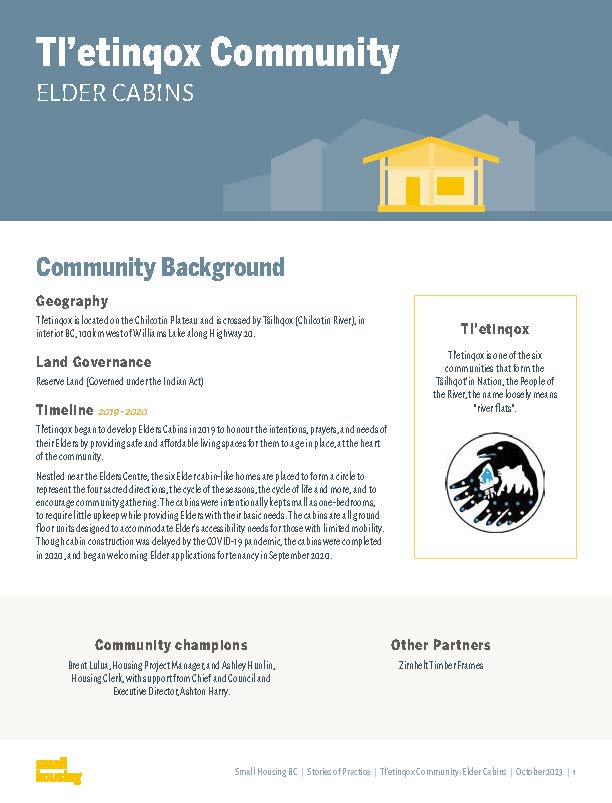
Nestled near the Elders Centre in the Tl’etinqox Community, six cabin-like homes are placed to form a circle to represent the four sacred directions, the cycle of the seasons, the cycle of life and more, and to encourage community gathering.
Tl’etinqox began to develop Elders Cabins in 2019 to honour the intentions, prayers, and needs of their Elders by providing safe and affordable living spaces for them to age in place, at the heart of the community. Elder tenancy applications opened for the cabins in September 2020.

Discover organizations from across Canada, and the rest of the world, who are contributing towards the gentle density movement and the delivery of homes that people want, need & deserve.
Name: ReHousing
About: ReHousing is a research initiative that explores how to convert single-family homes into multi-unit housing, using affordable, common-sense design to yield high-quality, well-designed space.
ReHousing is a collaboration between the University of Toronto, Tuf Lab and LGA Architectural Partners. This partnership brings together structured design research methods with practice-based knowledge to address real-world problems.
For more information: https://rehousing.ca/

Supporting the evolution of our single-detached neighbourhoods can be daunting, so Small Housing created the Gentle Density Network as a space where local government planners can tackle these collective challenges together.
Through the Gentle Density Webinar library, you can dive deep into the world of gentle density housing with insights from top experts from government, industry, and community sectors.
Explore cutting-edge practices, unpack emerging trends, and stay ahead of the curve with the latest gentle density insights. You can access the full library of webinars here, and can sign up to the Gentle Density Network here so as to stay informed on upcoming events.
The below is an extract from Small Housing’s Gentle Density Housing Bylaw Guide: A pathway for local governments, a guide that aims to provide local governments with a roadmap for changing their zoning bylaws to allow gentle density housing, based on experiences from jurisdictions leading the way. It was developed with support from CHMC.
Key insights:
Zoning bylaws across Canada vary widely in structure and content, reflecting applicable legislation and calibrated to the local conditions of the communities they serve to regulate. This diversity of bylaw formats makes adopting a ‘one-size fits- all’ Gentle Density Housing zone inappropriate in most circumstances.
Rather, as the below charts outline, bylaw changes must reflect local conditions, while allowing more flexibility in the housing options that are permitted in residential neighbourhoods. Some communities will have the resources to do extensive research and background work as part of a detailed approach to zoning reform, and others may choose to take a simpler path in adopting basic zoning parameters that will support gentle density housing.
There is value in learning from the approaches already in use by leading communities, and the table below provides precedent infill zones in select larger municipalities in British Columbia and Alberta.
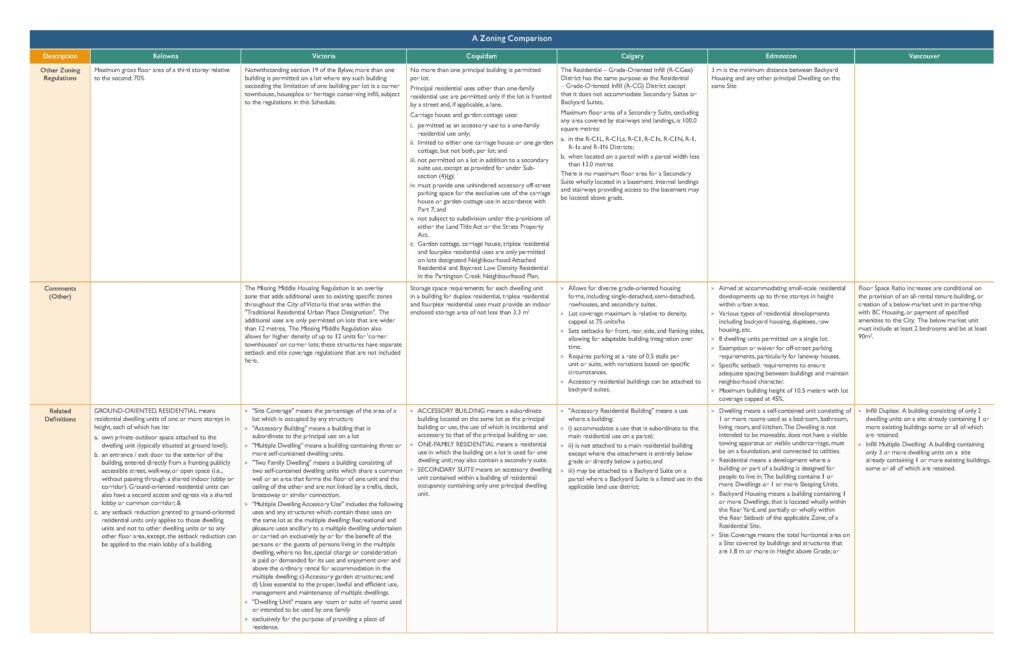
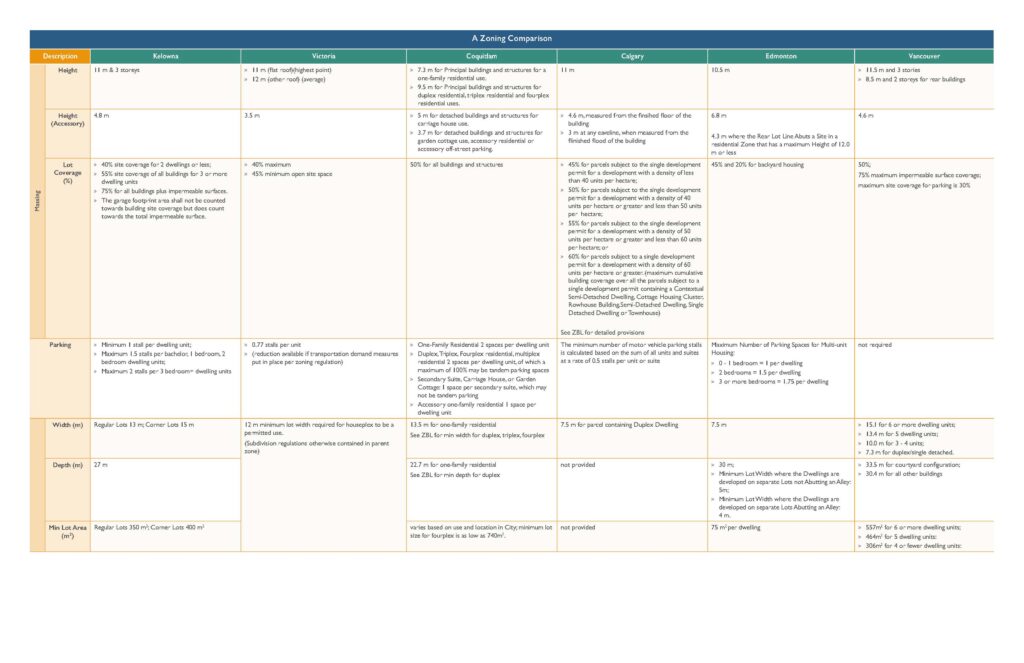
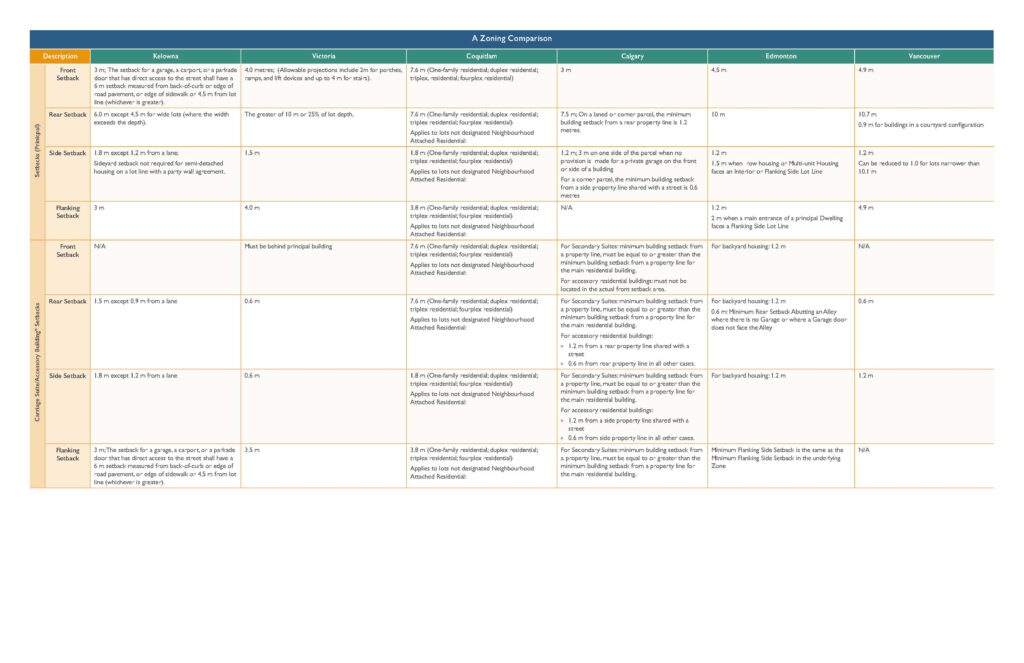
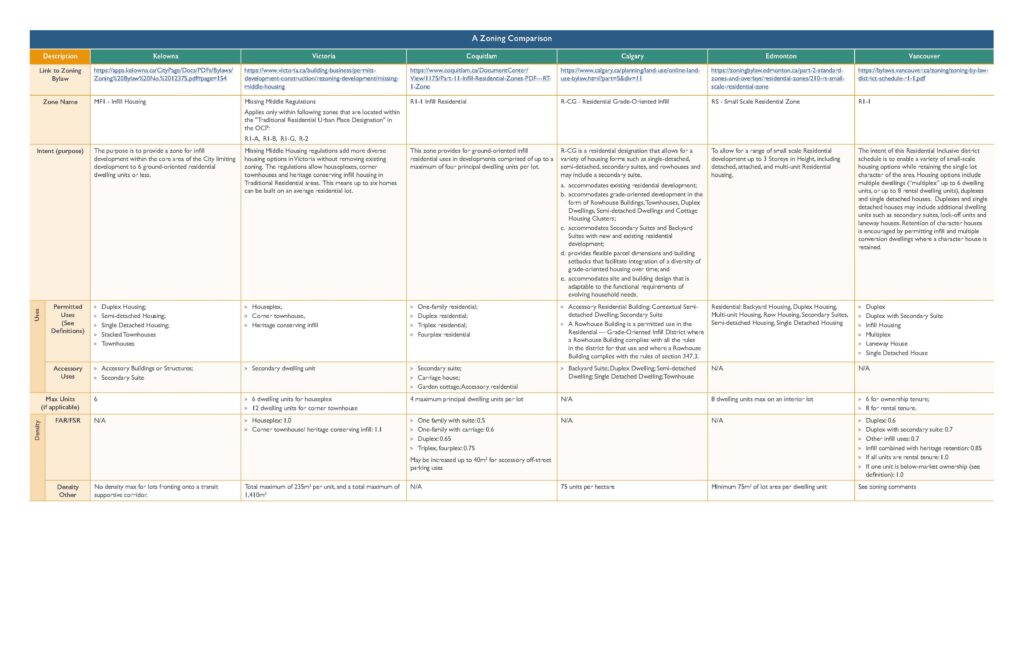
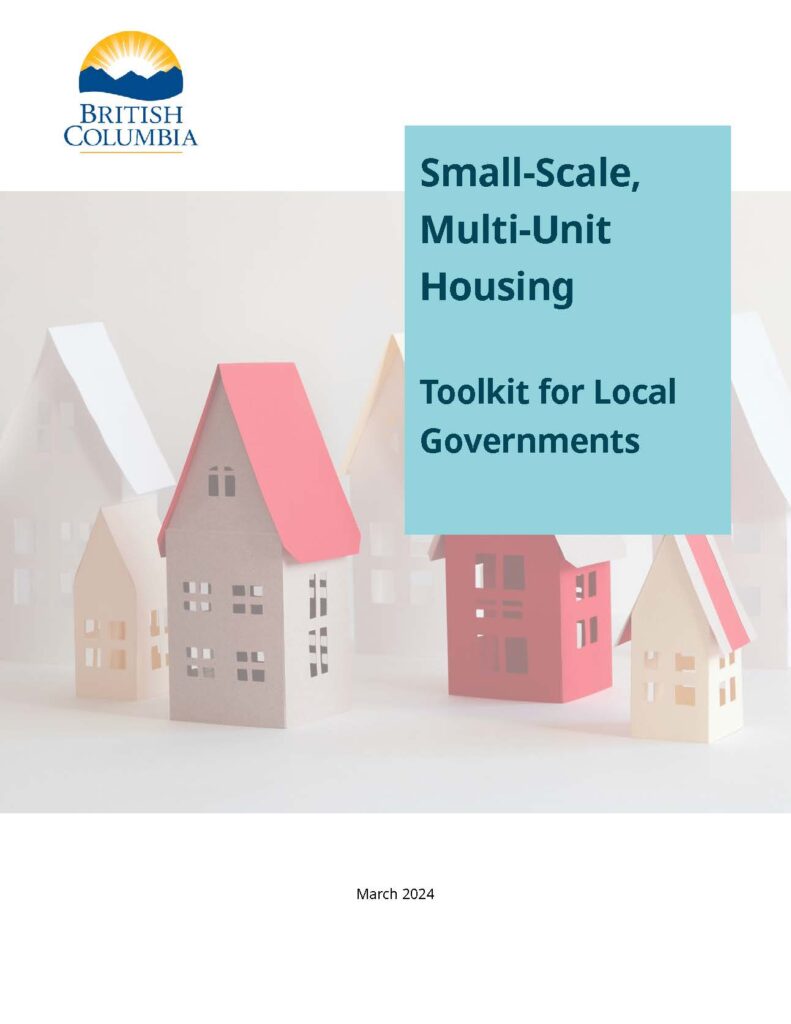
Key insights:
In November of 2023, the province of British Columbia released their “Homes for People Plan” that drastically reduced zoning and municipal barriers to the creation of gentle density homes. In summary, new legislation requires all local governments in British Columbia to update their zoning bylaws to allow up to three to four units in all single-family zones and up to six units for properties with frequent bus service.
This resource, developed by the province, is intended to help local governments and their community members understand the legislative changes introduced related to small-scale, multi-unit housing (SSMUH).
Note: The information in this tool kit is for guidance only and is not a substitute for provincial
legislation. It is not legal advice and should not be relied on for that purpose.
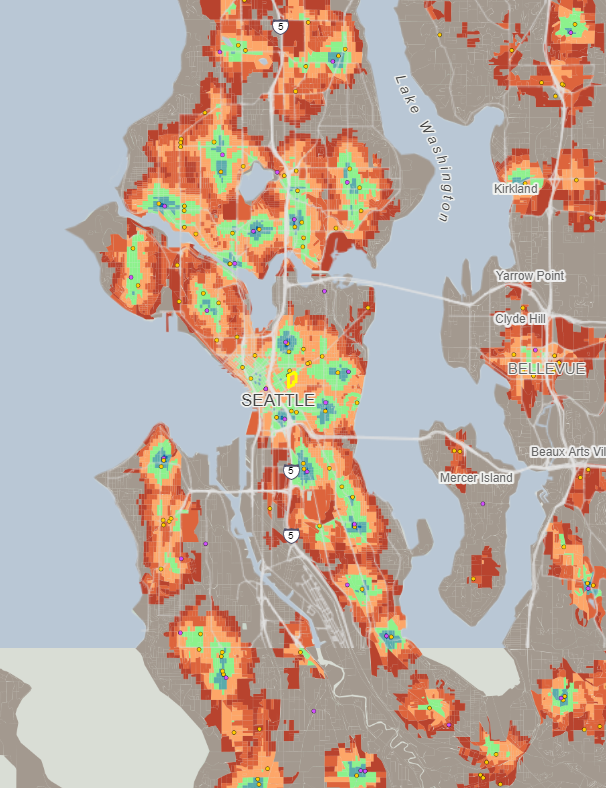
Key insights:
Close is an innovative tool that maps walkable, bikeable, and transit-friendly neighborhoods block by block across the entire US. It is a useful travel time map for people who want to be near the amenities that matter most to them.
On it, users can filter by access to amenities like grocery stores, schools, doctors’ offices, and coffee shops.
Close is built and maintained by Henry Spatial Analysis. For full access to the map, click here.
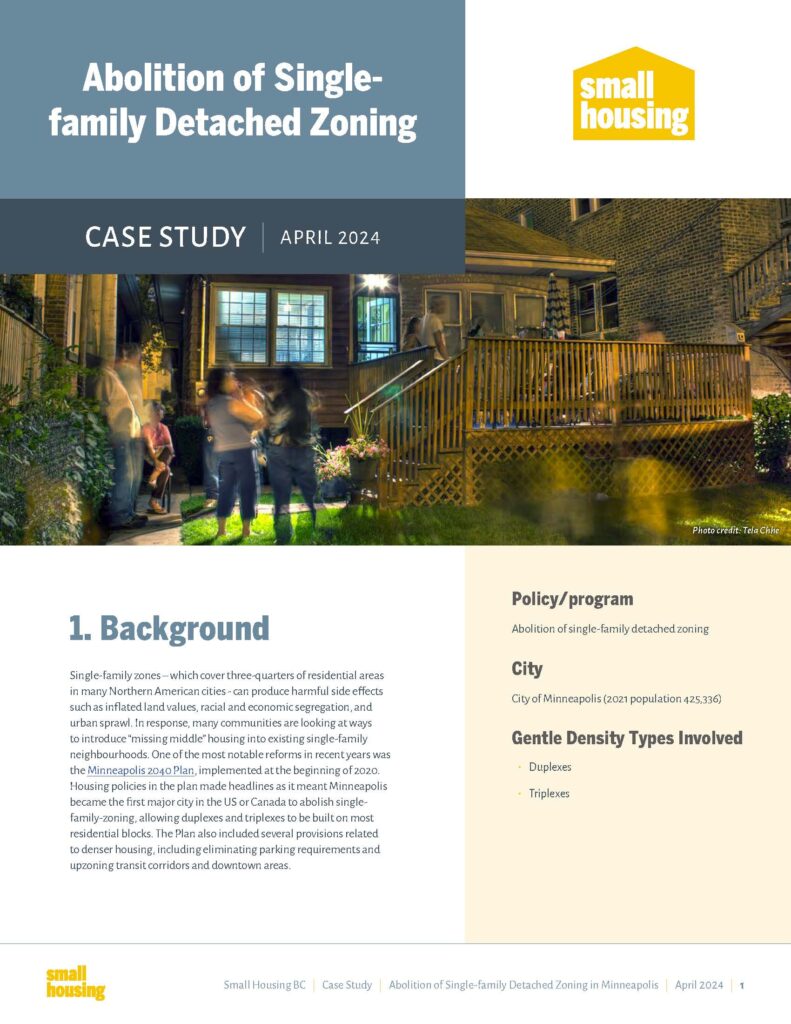
Key insights:
Single-family zones – which cover three-quarters of residential areas in many Northern American cities – can produce harmful side effects such as inflated land values, racial and economic segregation, and urban sprawl. In response, many communities are looking at ways to introduce “missing middle” housing into existing single-family neighbourhoods.
One of the most notable reforms in recent years was the Minneapolis 2040 Plan, implemented at the beginning of 2020. Housing policies in the plan made headlines as it meant Minneapolis became the first major city in the US or Canada to abolish single family- zoning, allowing duplexes and triplexes to be built on most residential blocks. The Plan also included several provisions related to denser housing, including eliminating parking requirements and upzoning transit corridors and downtown areas.
This Small Housing Case Study shares key details of the Plan, its impact to date, and what other communities can learn from it.